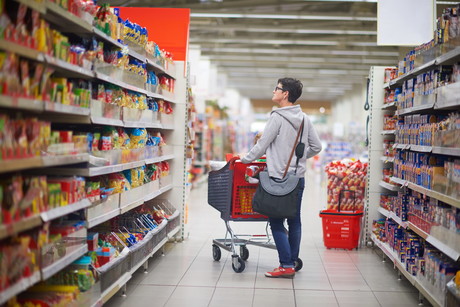Choosing the right primary packaging

Treating the symptoms of an issue is often a quick and easy fix, but ultimately it is best to look at the source of the problem. In the case of the food industry, increasing shelf lives of products are making them more vulnerable to damage and putting more pressure on primary packaging to protect them. This is why more food technologists are looking to create robust and reliable food packaging.
Consider this as an example. A food manufacturer is experiencing an unusual number of returns from the retailer, with complaints about damage and deformities in the product packaging.
To protect the product, adding reinforced secondary and tertiary protection in future deliveries would treat the symptoms, reducing the likelihood of dents by cushioning the product’s exterior. However, this wouldn’t treat the cause — insufficient primary packaging.
From factory to food store
Primary packaging includes all packaging up to the point of sale, such as a ready meal tray, its plastic film and the cardboard sleeve. Secondary packaging, on the other hand, describes the wrapping used to group individual units during storage, transport and display. Finally, tertiary packaging is used for transport purposes such as pallets, stretch wrap and strapping.
Reinforcing secondary packaging may protect the product during transit, but once the product has been unboxed, stocked and shelved, it is exposed to more potential damage on the supermarket aisle.
Today, food products spend more time on the supermarket shelves thanks to extended shelf lives created by modified atmosphere packaging (MAP). This process is commonly carried out with meals contained in smoothwall aluminium trays and can extend the lifespan of a product by up to 200%.
While shelf life maximisation is highly beneficial to manufacturers, retailers and consumers, it makes products more vulnerable to damage, especially in a busy supermarket with countless consumers inspecting ingredients. To completely protect a product, you must begin with primary packaging.
Choosing the right packaging
Strengthening the primary packaging of a product can be achieved by working closely with your packaging supplier to consider the most effective and protective size, shape and material options. For example, Advanta’s smoothwall aluminium trays are shatterproof, even when frozen, resulting in less damaged goods both in the factory and in the supermarket.
By opting for robust primary containers you can minimise the potential product damage from transit to checkout. That said, you should opt for strong and robust packaging that will last the product’s entire lifespan, even outside of the supermarket doors.
The smoothwall tray, for example, offers the consumer convenience. The tray is designed to enable the consumer to take the product from the freezer, to the oven and onto the table in the same tray. To manage all of this, the packaging needs to be strong.
Fixing weak packaging at the source results in less dependence on secondary and tertiary packaging to protect the product in transit. While secondary and tertiary packaging will still have their role in logistics, food companies that invest in primary packaging reap the benefits fewer returns cause by transport damage and in-store handling.
Treat the cause, not the symptoms.
Cool melt: is it worth switching?
Why use high-temperature melt adhesives when low-temperature adhesives are also an option? This...
Visy trials its new recyclable fibre-based thermal insulation
Visy is trialling its new insulation alternative to polystyrene, Visycell, which has been...
Re-In-Can-Ation project making Stone & Wood cans more sustainable
Visy is working with Stone & Wood on a pilot project called Re-In-Can-Ation to make beer cans...














